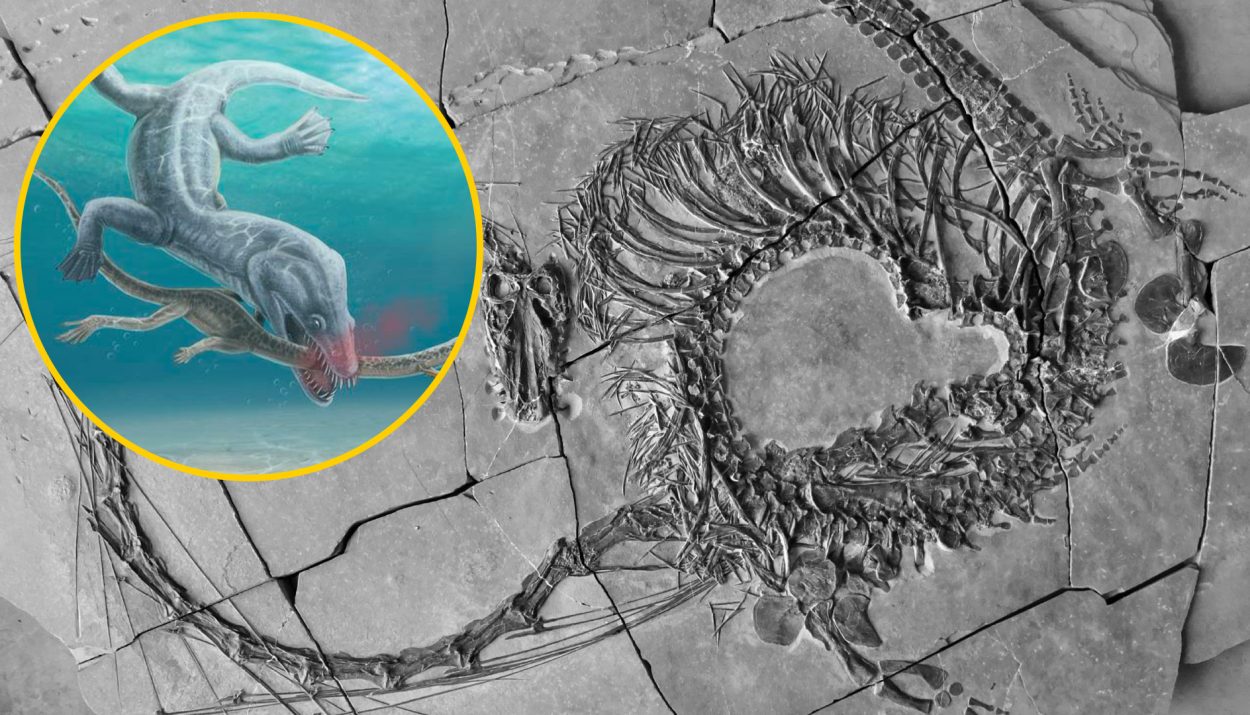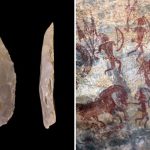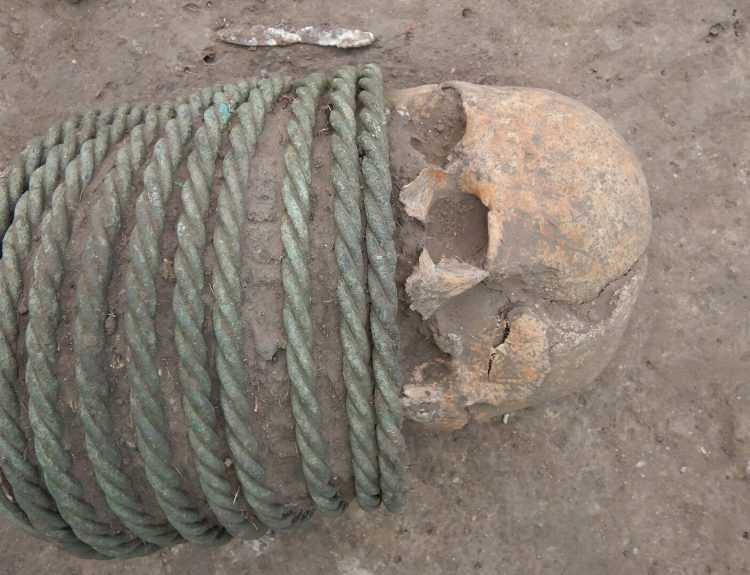The fossil of a 16-foot-long reptilian creature that experts say is 240 million years old has attracted popular attention because it looks a lot like a mythical Chinese dragon. Is this proof that dragons were not merely folklore animals? Probably not.
Although the fossil does bear a resemblance to the fire-breathing beast of Game of Thrones fame, the truth about this ancient animal is far less fantastical. Let’s take a look at what paleontologists have learned about this prehistoric fossil and the mythical Chinese dragon.
Dragons of Many Cultures
Dragons are legendary beasts that are found in the myths and folklore of ancient cultures all over the world. Depicted as reptilian or serpentine, the personalities and traits of the dragons varied from culture to culture. China, Japan, and other Eastern cultures view dragons as symbols of good fortune and wisdom.

For ancient Norse, Slavic, and English cultures, dragons guarded treasures and were the object of noble quests. In Middle Eastern mythologies, dragons were demonic. The feathered serpent of Mesoamerican cultures was dragon-like in appearance.
Could Dragons Have Been Inspired by Dinosaurs?
It might be easy to assume that the folklore stories of dragons from the past were inspired by dinosaurs. However, it is important to remember that dinosaurs died out long before humans came into being. Humans did not observe live dinosaurs and base their mythology on that.
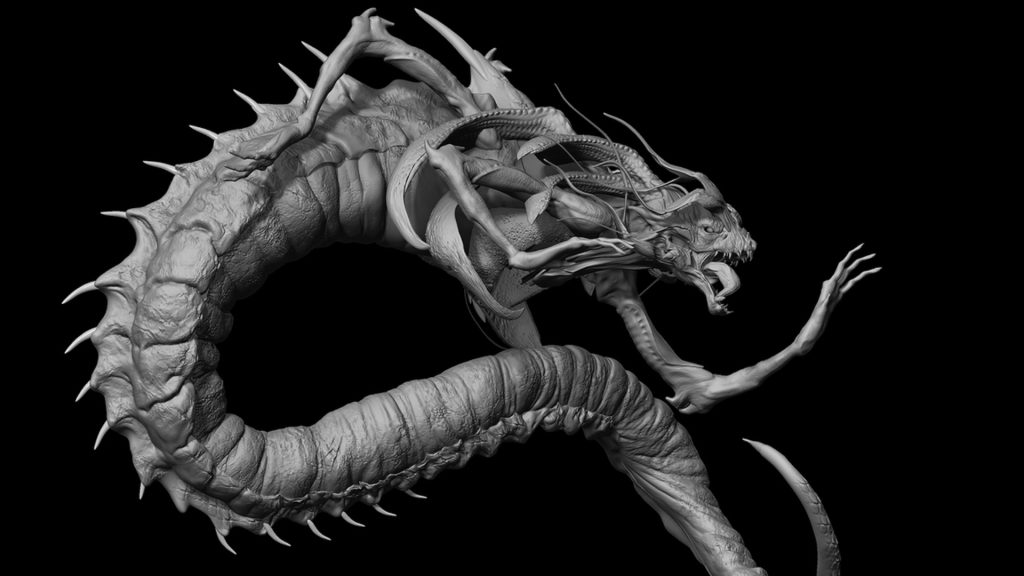
It is feasible, however, that people in ancient times encountered fossils of extinct dinosaurs. The myths and folklore of dragons may have developed after people of the past saw dinosaur fossils and struggled to understand what they were seeing. They filled in the details – colorful scales, feathers, fire breathing, etc. – and created stories about them.
The Dinocephalosaurus orientalis
The was once an inhabitant of southern China. The long-necked reptile thrived during the Triassic period. This dinosaur species was first identified by paleontologists in 2003 based on partial fossils that had been unearthed.
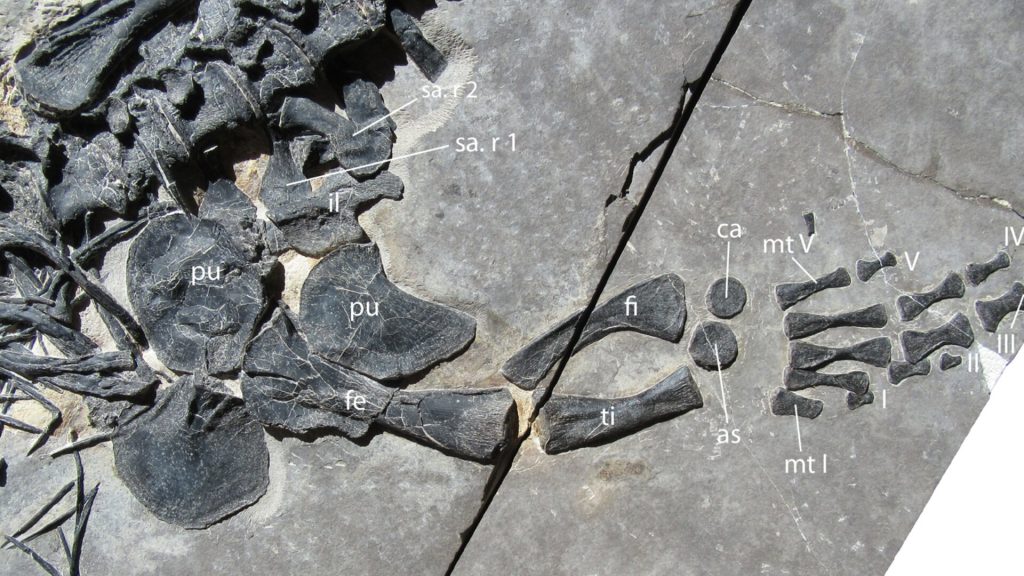
The recently discovered fossil is the most complete Dinocephalosaurus orientalis to be found. With a near-complete fossil to study, the paleontologists have been able to learn more about this extinct animal. And what they found is not inline with the dragon myths.
A Diverse Research Team
Since the Dinocephalosaurus orientalis was identified in 2003, a team of researchers have been studying this creature. The group includes scientists from China, the United States, Scotland, and Germany. Their base of operations is the Institute of Vertebrate Paleontology and Paleoanthropology, an offshoot of the Chinese Academy of Sciences in Beijing.

According to one of the researchers, Professor Li Chun, “This has been an international effort. Working with colleagues from the United States, the United Kingdom, and Europe, we used newly discovered specimens housed at the Chinese Academy of Sciences to build on our existing knowledge of this animal.”
An Extraordinary Find
Professor Chun continues, “Among all of the extraordinary finds we have made in the Triassic of Guizhou Province, the Dinocephalosaurus orientalis stands out as the most remarkable.” The newest Dinocephalosaurus orientalis fossil will certainly contribute greatly to the study.
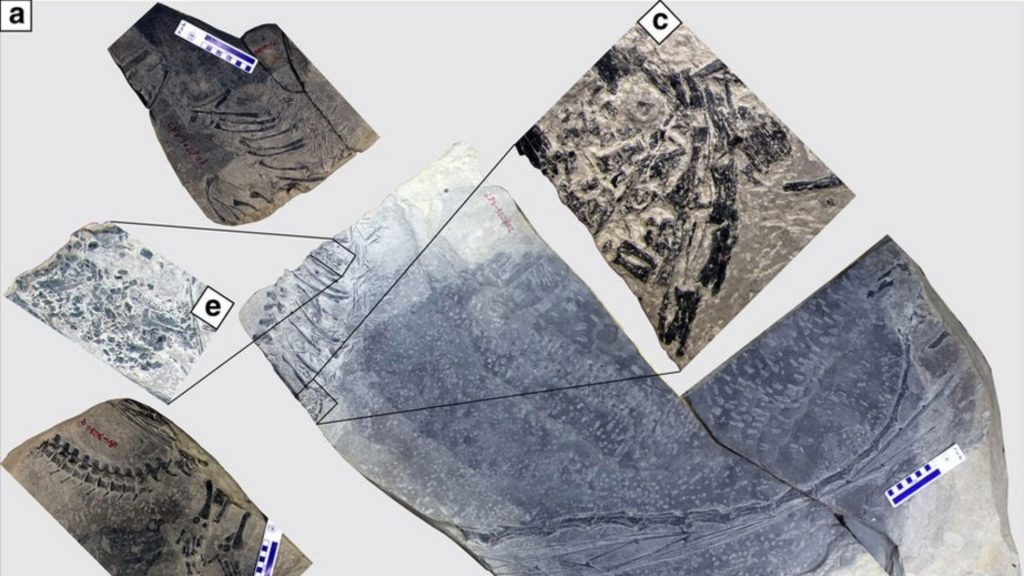
“This discovery allows us to see this remarkable long-necked animal in full for the very first time,” explained Dr. Nick Fraser, of the Natural Sciences at the National Museums of Scotland. “It is yet one more example of the weird and wonderful world of the Triassic that continues to baffle paleontologists.”
The Long-Necked Dinosaur
“We are certain that it will capture imaginations across the globe due to its striking appearance, reminiscent of the long, snake-like mythical Chinese dragon,” Dr. Fraser added. The Chinese word for “dragon” translates to “long”, which accurately describes how dragons are depicted in Chinese mythology.

Dragons were traditionally shown as long, snake-like animals. Chinese emperors were thought to be the earthly embodiment of dragons and the connection between dragons and power. Even today, traditional Chinese festivals, including the Chinese New Year, include dragon dances.
Not a Flying Dragon or a Dancing Dragon, but a Swimming Dragon
The intact Dinocephalosaurus orientalis fossil also reminded the researchers of another dinosaur from the Middle Triassic period, the Tanystropheus hydroides, a marine animal whose fossilized remains have been found in China, as well as in Europe.
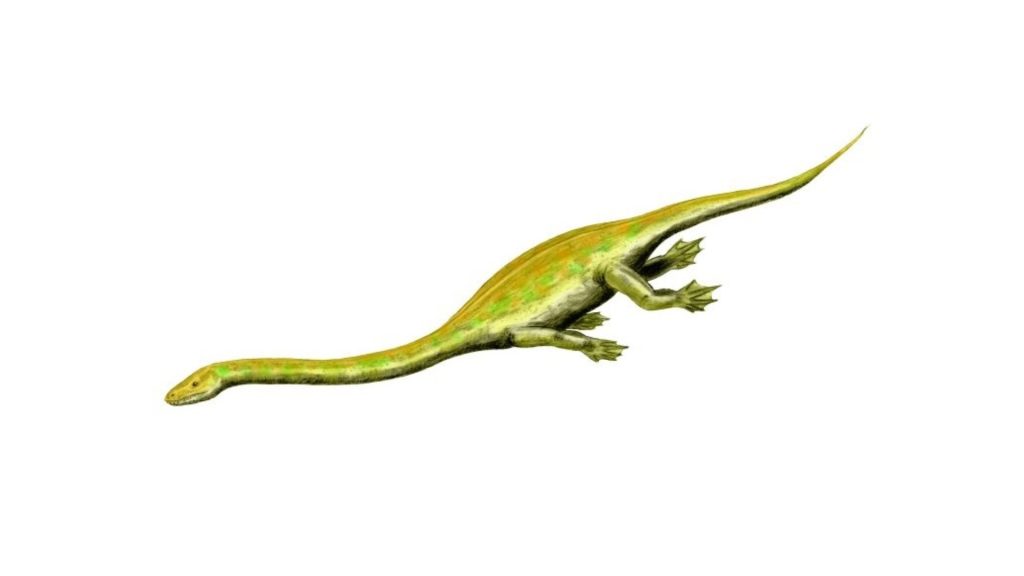
Both dinosaurs were nearly the same size, and both had teeth that were designed to trap fish. Both had flipper-like limbs to help propel it through the water. As the research team noted, this dinosaur was well-suited for life in the ocean. In fact, the newly discovered fossil showed small fish in the dinosaur’s stomach.
An Unusually Long Neck
One of the biggest differences between the Tanystropheus hydroides and the Dinocephalosaurus orientalis was the length of their necks. The Dinocephalosaurus orientalis had a longer neck with many more vertebrae – 32 in its neck alone – which gave it a more serpentine appearance.

One of the researchers on the team, Dr. Stephan Spiekman, a postdoctoral researcher from Germany’s Stuttgart State Museum of Natural History, explained, “We hope that our future research will help us understand more about the evolution of this group of animals, and particularly how the elongated neck functioned.”
Another Famous Doppelganger?
The long neck and side flippers seen on the Dinocephalosaurus orientalis fossil also call to mind another fabled and mysterious beast, but unlike the mythical dragon, this one is an aquatic creature. Sightings of a large, snake-like animal living in the depths of Scotland’s Loch Ness have been reported for centuries.
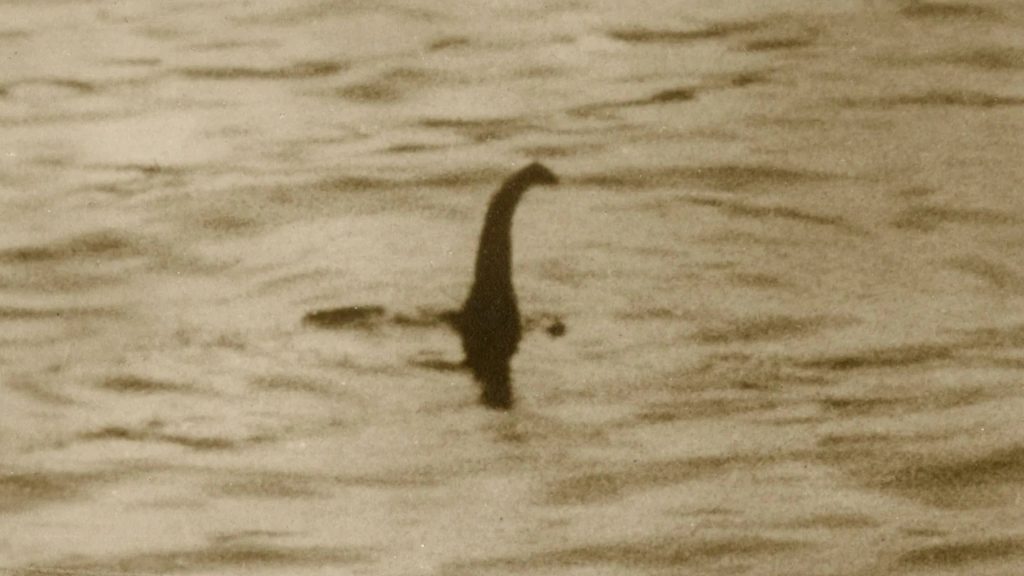
Some of the earliest reported sightings of the elusive cryptid at Loch Ness date back to the sixth century. Ever since the publication of the famous “Surgeon’s Photograph” of the Loch Ness Monster in 1934, folks have been scanning the waters of the deep lake in search of Nessie’s trademark neck and undulating body.
Probably Not Nessie’s Long, Lost Cousin
A long-necked creature is a commonality of the sightings of Nessie. Could the Dinocephalosaurus orientalis fossil be related to Nessie, the Loch Ness Monster? Probably not. Most experts agree that, if Nessie ever even existed, it was likely a type of plesiosaur.
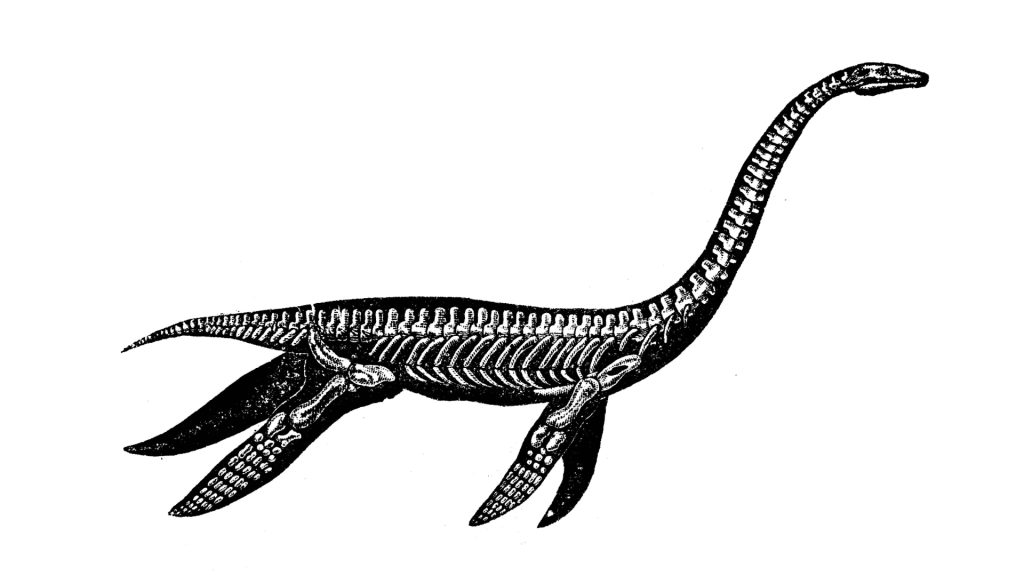
As the experts tell us, long-necked plesiosaurs evolved later, about 40 million years after the Dinocephalosaurus orientalis. In addition, the Dinocephalosaurus orientalis has thus far only been found in China, specifically in the Guizhou Province of southern China.
China Is a Treasure Trove of Dinosaur Fossils
The discovery of this Dinocephalosaurus orientalis fossil in China is just one of many finds made by paleontologists working in China. The country is a treasure trove of dinosaur fossils making it a hotbed of paleontology excavations. Part of the reason could be the diverse landscape of China.
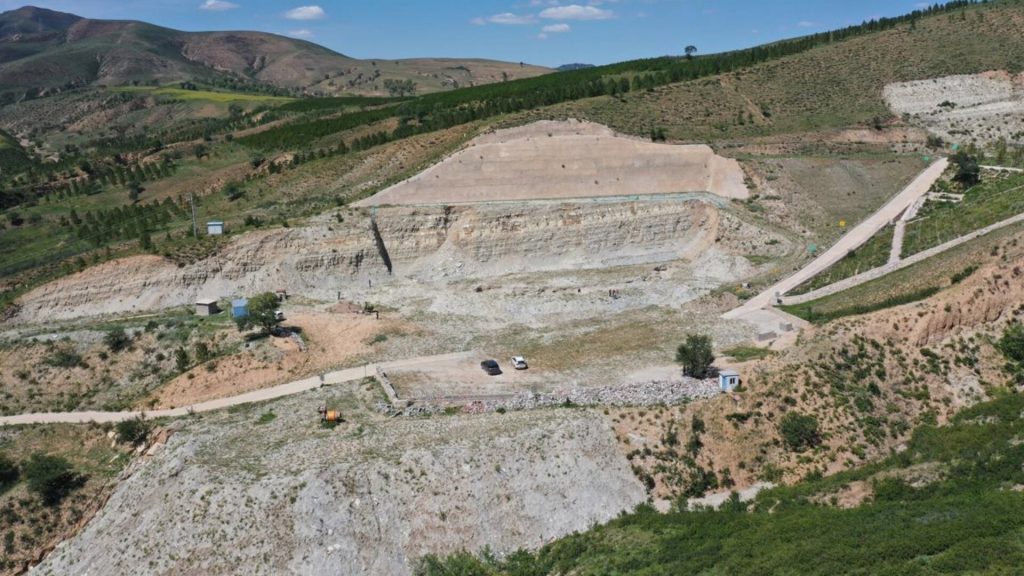
Significant discoveries have been made in the Gobi Desert, as well as the desert regions of Xinjiang. Other parts of China, from the Liaoning Province in the north to the Guizhou Province of the south, have yielded significant dinosaur fossils from various time periods.
A Leader in Paleontology Research
The Chinese government and academic world have demonstrated a commitment to advancing our understanding of Earth’s prehistoric past and the animals that lived at that time. China’s universities and academic facilities are committed to preserving the fossil discoveries and protecting key fossil beds.
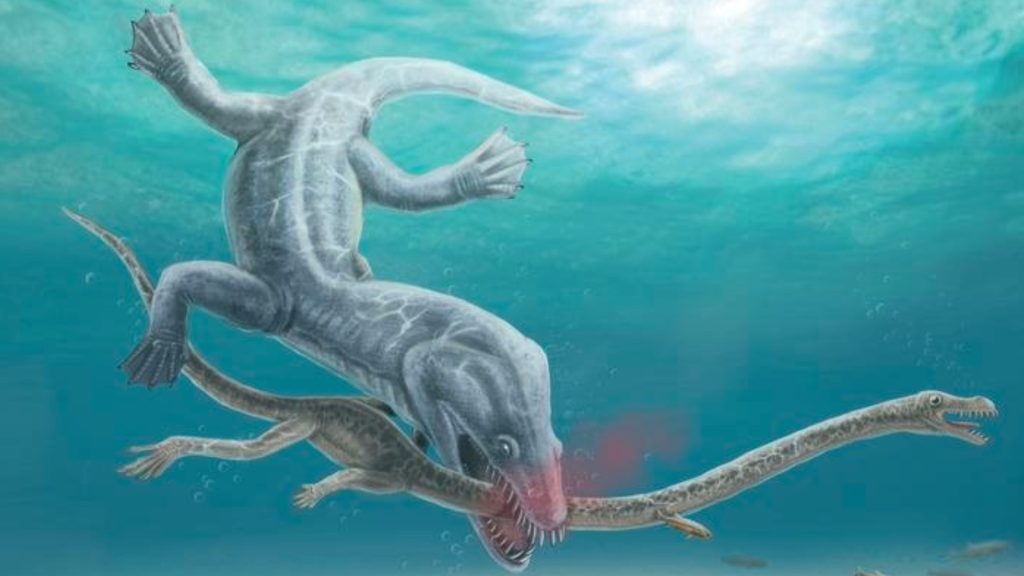
Of equal importance, China is open to international collaborations, as we see in the study of the Dinocephalosaurus orientalis fossil. Taking a collaborative approach to paleontology, according to Professor Chun, who works with China’s Institute of Vertebrate Paleontology and Paleoanthropology, is one of the best ways to advance our overall understanding of Earth’s prehistoric inhabitants.
Making Significant Discoveries
All this has positioned China as a leader in paleontology research. Professor Robert Ellam, who is the Editor-in-Chief of Transactions and Fellow of the Royal Society of Edinburgh, noted, “This remarkable marine reptile is another example of the stunning fossils that continue to be discovered in China.”

The work being done by this team of researchers, as well as others in the country, is helping to unlock the secrets of Earth’s past. “As an early-career researcher, it has been an incredible experience to contribute to these significant findings,” said Dr. Spiekman.

